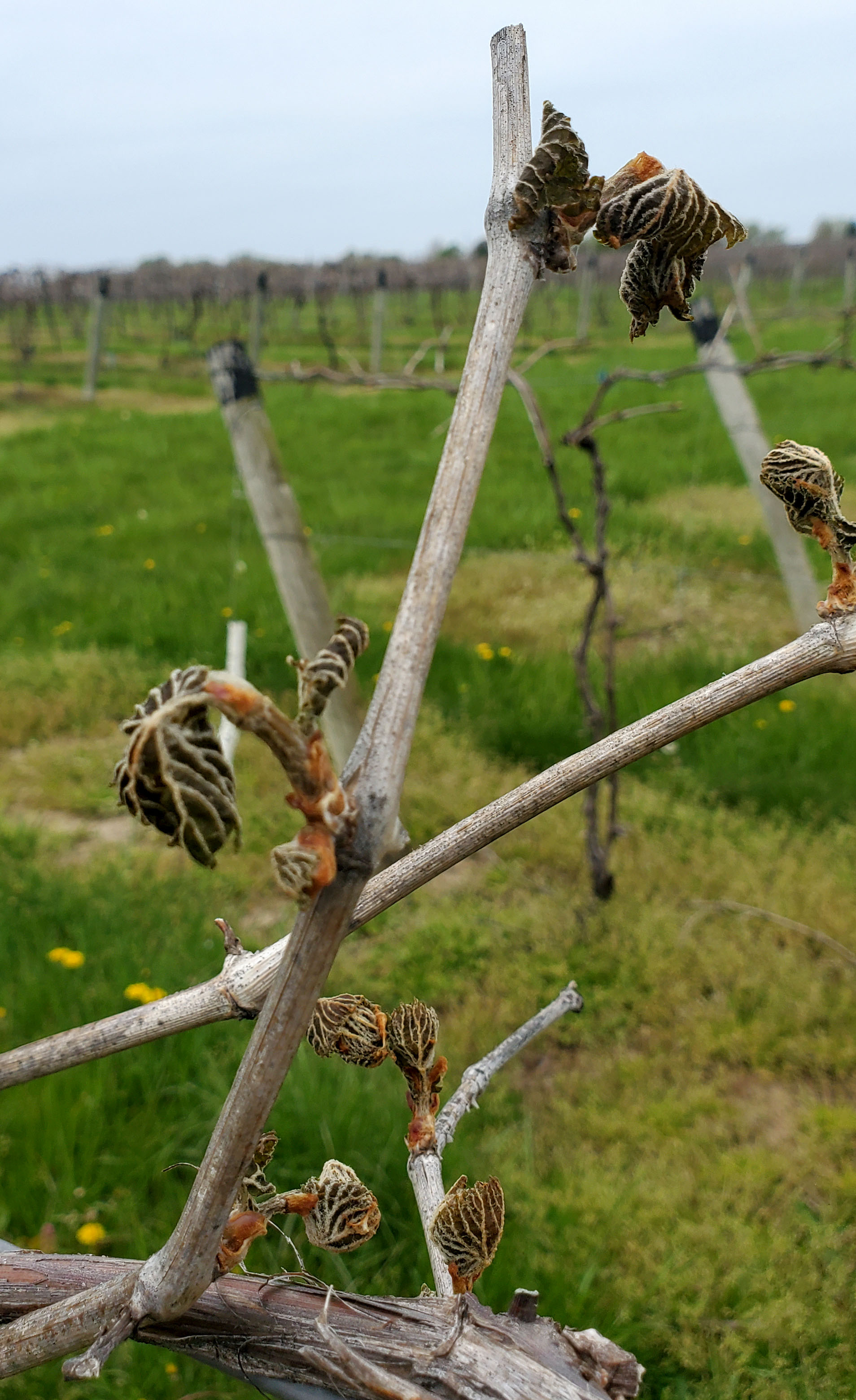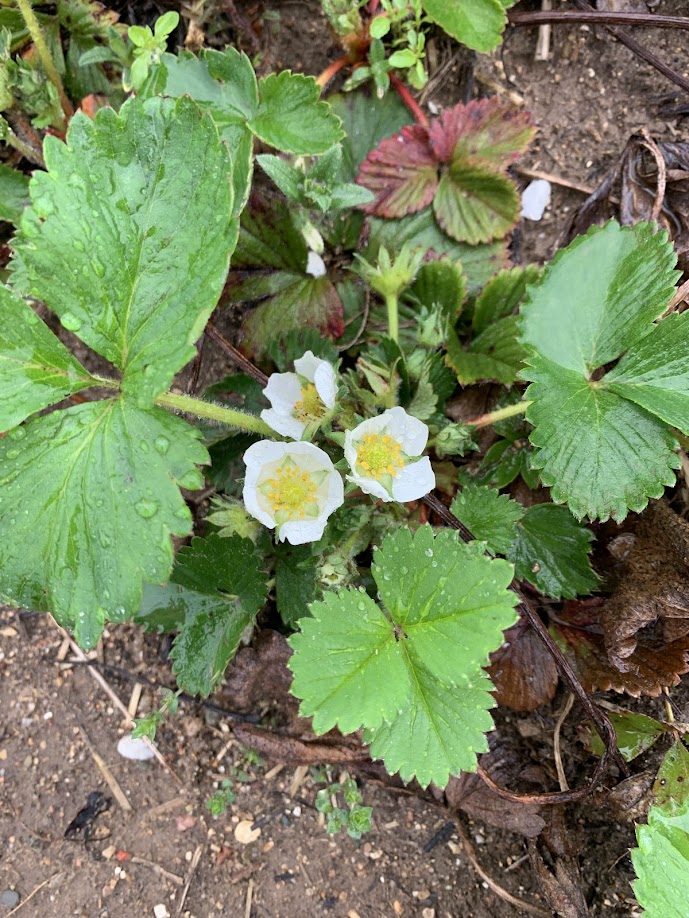Southwest Michigan fruit update – April 30, 2024
Weather has been tricky the past few weeks for fruit growers.

Weather
Despite the cold weather last week, we are still between one and two weeks ahead of normal. Advanced phenology coupled with cold weather meant that southwest Michigan faced a significant frost last week and damage occurred across the region. The lowest temperatures were overnight on Wednesday, April 24–25. This was a particularly heavy frost in many areas coupled with extended low temperatures through the evening, which might have contributed to the damage occurring in phenologies that might not have been otherwise expected.
|
Southwest Michigan growing degree day (GDD) summary from March 1 – April 29, 2024 |
|||
|
Station |
GDD 42 F |
GDD 45 F |
GDD 50 F |
|
Benton Harbor (SWMREC) |
439 |
340 |
213 |
|
Lawton (Lawton) |
429 |
332 |
206 |
|
Fennville (TNRC) |
373 |
282 |
168 |
|
Grand Junction |
429 |
332 |
207 |
|
Average for the SW region |
422 |
326 |
202 |
Watch the latest weather report from Michigan State University meteorologist Jeff Andresen.

Tree fruit
Low temperatures in the high 20s on the morning of Thursday, April 25, resulted in damage to stone fruit. Temperatures reached the mid-20s in some parts of the southwest and may have caused damage to apple fruit buds. Assessment of the damage by this freeze is still underway. Tree fruit are seven to 10 days ahead of the long-term normal.
Apricots are out of the shuck and up to 10 mm in diameter. Fruit are now vulnerable to insects with piercing mouthparts, such as tarnished plant bug and plum curculio.
Peach and nectarine are in the shuck with the fruit tip emerging in Berrien County and at petal fall in Allegan County. Protection against plum curculio and tarnished plant bug should start when fruit begin emerging from the shuck. Oriental fruit moth catch has been ongoing. According to the model, oriental fruit moth egg hatch should be starting soon. The freeze last week may have temporarily suppressed at least some of the oriental fruit moth egg laying.
In cherries, fruit development has moved quickly with sweets at 5-7 mm diameter and tart cherries in the shuck. Managing cherry leaf spot in central Berrien County and plum curculio are the major concerns now. Potential fruit crops were reduced by low temperatures last week.
In plums, Shiro Japanese plum fruit are out of the shuck and Stanley European plum are still in the shuck in Berrien County. Fruit out of the shuck are susceptible to curculio and plant bug attacks. Critical time for fungicide control for black knot is petal fall (usually mid- to late May) to late June (10-inch new shoot growth). Like other stone fruit, susceptibility to brown rot infections decreases after bloom and increases during fruit coloring before harvest.
Apples range from full bloom to 5 mm diameter fruit. Fruit buds are still opening on some varieties, providing potential for new fire blight infections. Flowers that are open for over three days become more resistant to infection. Warm temperatures and rain on Sunday and Monday, April 28 and 29, resulted in predicted fire blight infection periods for most of southwest Michigan. Wind and rain on Monday made antibiotic spray applications difficult. Apple scab ascospores are released during rain events until early June most years. Continued management of powdery mildew and juniper rust is needed for susceptible apple varieties. Trap catches of codling moth are expected to start soon.
Pear (Bartlett) fruit range from 5 to 8 mm in diameter. Continued scab sprays are needed to protect green tissue against infection. Fire blight management is needed for susceptible varieties with new bloom still opening. Fire blight resistance to streptomycin is widespread throughout most of the western Michigan apple and pear growing regions.
Small fruit
In grapes, the freeze on Thursday morning, April 25, caused widespread damage to the more advanced varieties. Juice grapes and hybrid wine grapes were the most affected. Significant primary shoot loss is being seen in most grape growing areas of Van Buren and Berrien counties. Parts of northern Berrien County and Allegan County seem to only have partial bud damage. Vinifera grapes are starting to move with advanced shoots up to an inch long. Most that survived the winter cold damage also seemed to survive last week’s frost. In locations damaged by last week’s frost, secondary shoots should begin to emerge in the next week or two. Secondary shoots can produce a partial crop of around 50% depending on variety.
Blueberry bloom is here. Apply fungicides to protect open flowers from mummy berry infection. Flowers are most susceptible to both infection and pollination after opening. Fungicide applications are focused on early bloom and mid- or full bloom to protect newly opened flowers, which are most at risk. At the end of bloom, disease control refocuses on both mummy berry infections during late bloom and anthracnose infections to young green fruit. Applying pesticides during bloom should be done in the early morning or at night when bees are unlikely to be foraging. Check out this Michigan State University Extension article about pollinator stewardship during fruit crop bloom.
Want more blueberry specific content? Subscribe to Blueberry Bites!
Strawberry flowers have emerged. With the frost last week, many growers used overhead irrigation to protect open blooms. Irrigation for frost and the on-off rain we have been having can make it so that fungicides have a hard time sticking. If sprays are needed, use systemic options and treat early in the morning for the most time for the plant to absorb the fungicide before the next watering. With bloom and bee activity, do not use insecticides. Cool, wet conditions can favor angular leaf spot, a bacterial disease. The only effective bacterial controls are copper formulations. Growers are looking at early season herbicides to control overwintering weeds and have begun spreading straw. When selecting an herbicide, check the preharvest interval.

Bramble buds have separated from the cane and are starting to open. Some early varieties have expanded leaves. Once you have leaves, you can start scouting for leaf eating insects like sawflies and leafrollers.
Upcoming meetings
Our weekly Monday Night South Michigan Fruit IPM Meetings will once again be a hybrid format. The meetings will be held in-person at the Southwest Michigan Research and Extension Center, 1791 Hillandale Rd, Benton Harbor, MI 49022, with virtual attendance available online. Our next meeting is Monday, May 6, at 5:30 p.m. No advanced signup is needed for attending in-person. The meetings are free, and one pesticide applicator credit is available for each meeting.
The MSU Extension blueberry team will be hosting a Blueberry Pollination Meeting on May 15 the Trevor Nichols Research Center in Fennville.
Additional information and surveys
Michigan State University is running a pollinator survey this spring and summer to understand how people interact with pollinators in natural, urban and managed landscapes. The survey is anonymous and takes only 10-15 minutes to complete.
This work is supported by the Crop Protection and Pest Management Program [grant no 2021-70006-35450] from the USDA National Institute of Food and Agriculture. Any opinions, findings, conclusions, or recommendations expressed in this publication are those of the author(s) and do not necessarily reflect the view of the U.S. Department of Agriculture.



 Print
Print Email
Email




